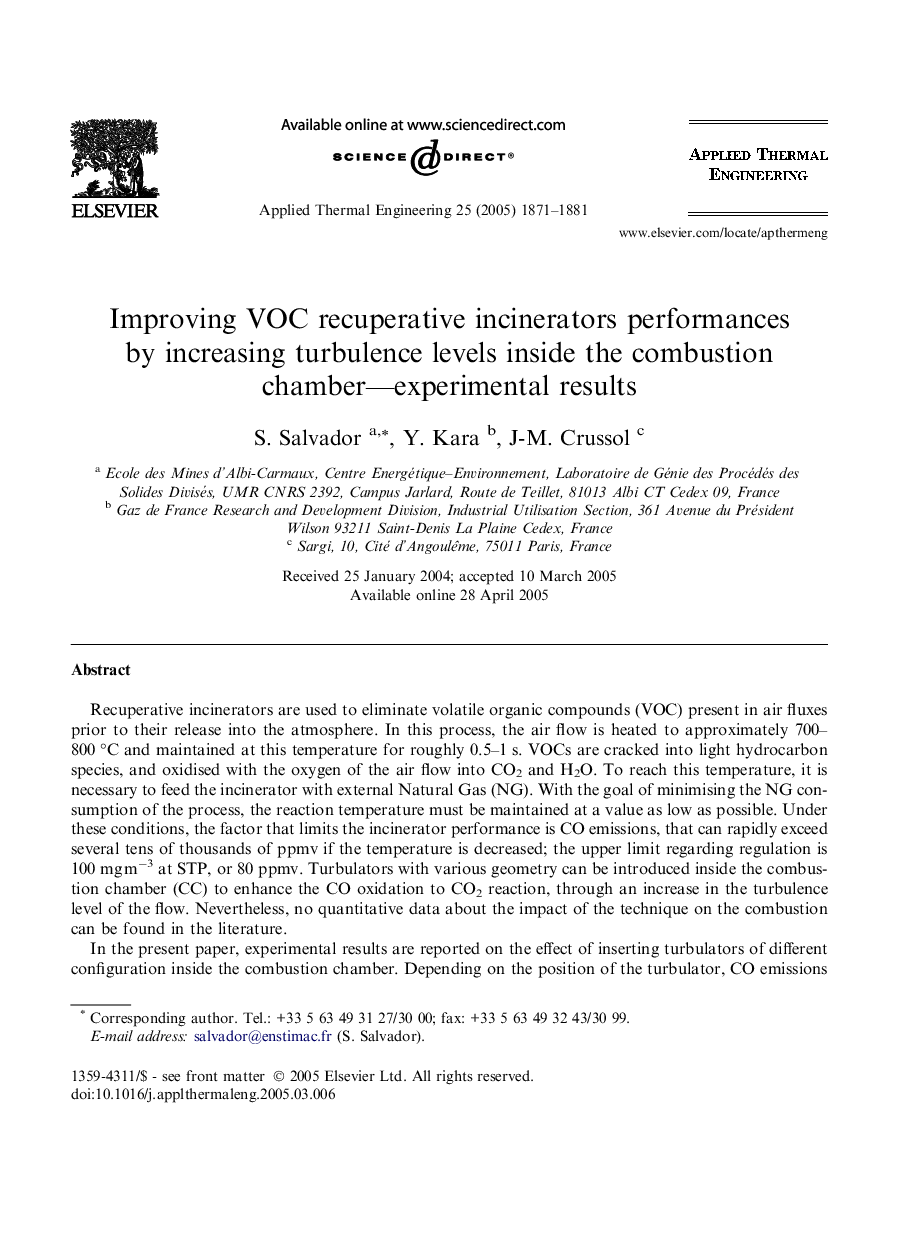| Article ID | Journal | Published Year | Pages | File Type |
|---|---|---|---|---|
| 649822 | Applied Thermal Engineering | 2005 | 11 Pages |
Recuperative incinerators are used to eliminate volatile organic compounds (VOC) present in air fluxes prior to their release into the atmosphere. In this process, the air flow is heated to approximately 700–800 °C and maintained at this temperature for roughly 0.5–1 s. VOCs are cracked into light hydrocarbon species, and oxidised with the oxygen of the air flow into CO2 and H2O. To reach this temperature, it is necessary to feed the incinerator with external Natural Gas (NG). With the goal of minimising the NG consumption of the process, the reaction temperature must be maintained at a value as low as possible. Under these conditions, the factor that limits the incinerator performance is CO emissions, that can rapidly exceed several tens of thousands of ppmv if the temperature is decreased; the upper limit regarding regulation is 100 mg m−3 at STP, or 80 ppmv. Turbulators with various geometry can be introduced inside the combustion chamber (CC) to enhance the CO oxidation to CO2 reaction, through an increase in the turbulence level of the flow. Nevertheless, no quantitative data about the impact of the technique on the combustion can be found in the literature.In the present paper, experimental results are reported on the effect of inserting turbulators of different configuration inside the combustion chamber. Depending on the position of the turbulator, CO emissions can be drastically reduced. In the best case and in spite of the fact that the turbulator geometry is not yet optimised, CO emissions are reduced from 1990 ppmv down to 600 ppmv. This is equivalent to a possible decrease in the exit temperature of 30 °C keeping CO emissions at the same level in the case where the turbulator is used. This is also equivalent to a reduction of 5.4% in the NG consumption of the incinerator.
